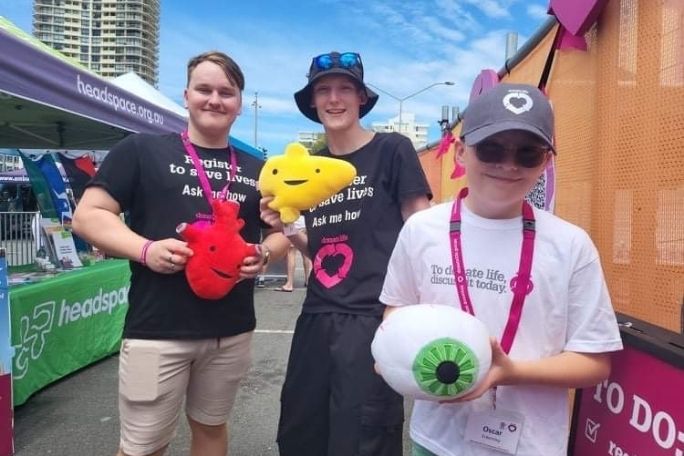Lesson Summary
In this lesson, students consider a variety of promotions for organ and tissue donation and their possible effects on audiences. They will explore possible reasons for low rates of donor registration amongst young Australians. They will then create an innovative campaign that relates to young people and invites them to take action.
Learning Intentions:
Students will...
- understand the relevance of organ donation to a teenage audience.
- understand the persuasive strategies used in two case studies.
- analyse a target audience to make effective decisions.
Success Criteria:
Students can...
- identify successful strategies of persuasion.
- identify new and innovative ways that organ donation can be made relevant to teens.
Lesson guides and printables
Curriculum links
Select your curriculum from the options below.
Lesson details
Curriculum Mapping
Australian Curriculum content descriptions:
Years 9 & 10 Health and Physical Education:
- Evaluate situations and propose appropriate emotional responses and then reflect on possible outcomes of different responses (ACPPS094)
- Critically analyse and apply health information from a range of sources to health decisions and situations (ACPPS095)
Years 9 & 10 Media Arts:
- Produce and distribute media artworks for a range of community and institutional contexts and consider social, ethical and regulatory issues (ACAMAM077)
Syllabus outcomes: PDHPE5.13, PDHPE5.6, PDHPE5.7, PDHPE5.8
General capabilities: Literacy, Personal and Social Capability, Information and Communication Technology (ICT) Capability
Cross-curriculum priority: Sustainability
Relevant parts of Years 9 & 10 Health and Physical Education achievement standards: Students access, synthesise and apply health information from credible sources to propose and justify responses to health situations.
Relevant parts of Years 9 & 10 Media Arts achievement standards: Students produce representations that communicate alternative points of view in media artworks for different community and institutional contexts. They manipulate genre and media conventions and integrate and shape the technical and symbolic elements for specific purposes, meaning and style.
This lesson is part of the wider unit of work DonateLife: Exploring Organ and Tissue Donation – Years 9 & 10.
Level of teacher scaffolding: Medium – facilitate class discussion and guide students in creating their campaigns.
Resources Required
- A device capable of presenting a video to the class
- Campaign Examples (one digital copy for each student)
- Student devices capable of creating and editing audio-visual materials, such as an iPad, or laptop
- Student Worksheets – one copy per student
Skills
This lesson is designed to build students’ competencies in the following skills:
- Communication
- Creativity
- Digital Literacy
- Problem Solving
- Collaboration
Additional Info
This lesson has been created in partnership with DonateLife to get young Australians talking about organ and tissue donation.
Organ, eye and tissue donation saves lives, restores health and improves the quality of life for thousands of Australians each year. But did you know that only 2% of people who die in hospitals each year can be considered for organ donation? One organ donor can save the lives of up to seven people and help many more through eye and tissue donation.


Welcome back!
Don't have an account yet?
Log in with:
Create your free Cool.org account.
Many of our resources are free, with an option to upgrade to Cool+ for premium content.
Already have an account?
Sign up with:
By signing up you accept Cool.org's Terms and Conditions(Opens in new tab) and Privacy Policy(Opens in new tab).